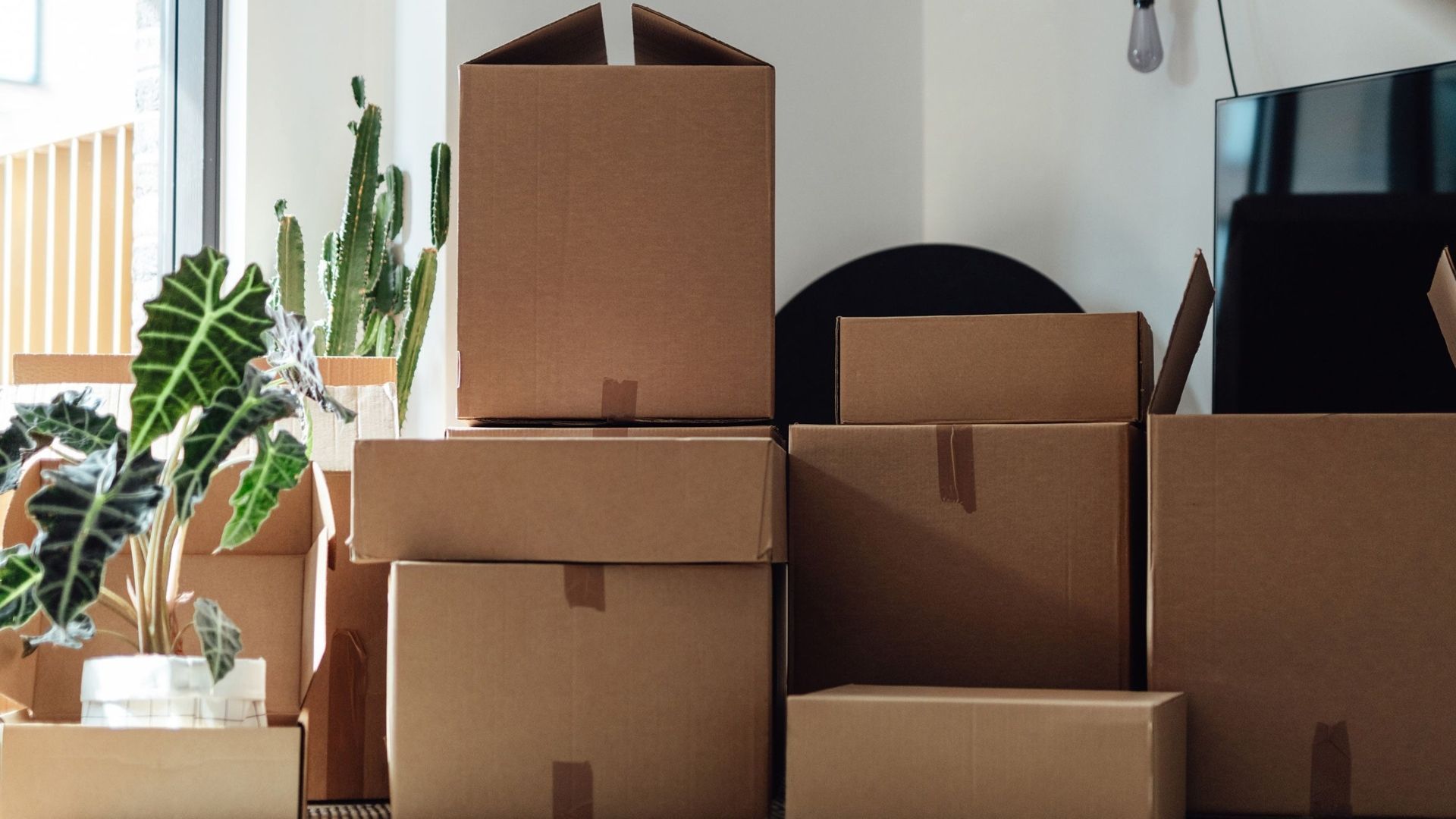What is the Most Expensive Part of Moving?
Transportation costs are the most expensive part of moving, making up 50-60% of your total moving bill. This includes the truck, fuel, driver wages, and all the costs to get your stuff from point A to point B. Labor costs come second, followed by packing services and specialty item handling.
Moving can feel overwhelming, especially when you're trying to figure out where your money goes. In this guide, we'll break down exactly what makes moving so expensive and share proven ways to keep costs under control. You'll learn about every cost factor and discover smart strategies to save money on your next move.
Why Transportation Dominates Moving Costs
Transportation isn't just about renting a truck. It's a complex mix of costs that add up quickly.
What's Inside Transportation Costs
Distance and fuel expenses make up the biggest chunk. The farther you move, the more you'll pay. A local move might cost $200-400 for the truck, but cross-country moves can hit $2,000-4,000 just for transportation.
Driver and crew wages during travel time add up fast. For long-distance moves, drivers need to eat, sleep, and sometimes stay in hotels. These costs get passed on to you.
Equipment and truck maintenance costs are factored into your bill. Moving companies need to maintain their fleet, and bigger trucks cost more to operate.
How Transportation Costs Scale
Local moves under 50 miles typically charge $30-500 for truck rental plus hourly labor. But once you cross state lines, everything changes. The transportation of your belongings is typically the most expensive part of moving, accounting for 50%–60% of total costs.
Long-distance moves often cost $1,000-14,000+ because transportation becomes the major expense. The weight of your belongings, distance traveled, and fuel costs all multiply together.
Labor Costs: The Second Biggest Expense
After transportation, labor takes the biggest bite out of your budget. Professional movers typically charge $80-180 per hour per person for local moves.
How Labor Costs Work
Hourly rates vary by location and crew size. The average cost across the United States for two helpers for two hours is $279 in 2025 for moving labor, but this can go much higher for complex moves.
Time factors that increase labor costs include:
- Stairs and elevators
- Heavy furniture
- Difficult access
- Packing and unpacking services
- Assembly and disassembly
What Affects Labor Time
Home size directly impacts labor hours. A studio apartment might take 2-3 hours with two movers, while a four-bedroom house could need 8-12 hours with a larger crew.
Building challenges like narrow hallways, flights of stairs, or long walks from the truck to your door can double your labor time. Some companies charge extra "long carry" fees if they have to walk more than 100 feet.
Packing Services: Convenience at a Cost
Professional packing services can save you time and stress, but they're expensive. The cost of packing services ranges from $280 to $2,200, with an average price of $1,000.
Full-Service Packing Breakdown
Material costs include boxes, tape, bubble wrap, and packing paper. Professional movers often charge 20-30% markup on these supplies.
Labor for packing typically costs the same hourly rate as moving labor - around $80-100 per hour per person. A two-bedroom home might need 6-8 hours of packing work.
Partial Packing Options
Many people choose partial packing services for just fragile items or specific rooms. This can cost $100-500 and handles the trickiest items while you pack everything else.
Kitchen packing is popular because dishes and glassware need special care. Expect to pay $150-300 for professional kitchen packing in an average home.
Specialty Item Moving Costs
Some items cost way more to move than others. These specialty items can turn a reasonable move into an expensive one.
Piano Moving
Upright pianos typically cost $250-1,000 to move locally. Moving a pool table costs an average of $550, though rates range from $50 to $4,000. Grand pianos can cost $300-2,000 or more because they need special equipment and extra crew members.
Other Expensive Items
Pool tables require disassembly, special transport, and reassembly. The slate tops are extremely heavy and need professional handling.
Gun safes can weigh 500-1,500 pounds and need special moving equipment. Expect to pay $200-500 extra for safe moving.
Hot tubs and spas cost $500-1,500 to move because they're heavy, awkward, and often need crane services.
Hidden Costs That Add Up
Moving companies often advertise low base rates, but the final bill includes many extras that can double your costs.
Access and Building Fees
Stair fees typically add $20-40 per flight of stairs. A third-floor apartment could add $80-120 to your bill.
Elevator fees range from $75-150 if movers need to use building elevators for extended periods.
Long carry charges apply when movers can't park close to your door. Expect $1-2 per foot for distances over 100 feet.
Timing and Scheduling Costs
Weekend moves cost 20-30% more than weekday moves. Summer moves (May-September) are peak season and can cost 20-30% more than winter moves.
Rush or same-day bookings often come with premium charges of 25-50% above normal rates.
Storage and Delays
Temporary storage becomes necessary when your new home isn't ready. Storage fees: If you're moving long-distance or your new home isn't quite ready yet, factor long- or short-term storage options into your budget.
Short-term storage typically costs $50-150 per month for a small unit, but can go much higher for larger households.
Insurance and Protection Costs
Basic moving insurance doesn't cover much. Understanding your options helps you avoid expensive surprises.
Basic vs. Full Coverage
Released value protection comes free but only covers 60 cents per pound. Your 50-pound TV worth $1,000 would only get $30 in coverage.
Full value protection costs 1-5% of your belongings' declared value but covers replacement or repair costs. For a $50,000 household, this might cost $500-2,500.
Third-Party Insurance
Separate moving insurance sometimes costs less than the moving company's coverage. Shop around if you have valuable items that need better protection.
Regional Cost Differences
Where you move makes a huge difference in costs. Some areas are just more expensive than others.
High-Cost Moving Areas
New York City local moves cost $500-3,000 depending on home size. San Francisco and Los Angeles have similar high costs due to traffic, parking challenges, and high labor costs.
Canadian moves tend to cost less than U.S. moves. Moving out of a 1-bedroom apartment will cost you approximately $600-$800 with 2 movers completing the job in 4-6 hours.
Lower-Cost Areas
Smaller cities and rural areas often have lower labor costs and easier access, reducing overall moving expenses.
Smart Ways to Reduce Moving Costs
You don't have to pay full price for your move. Here are proven strategies to cut costs.
Timing Your Move
Best times to move for lower costs:
- October through April (off-season)
- Tuesday through Thursday
- Middle of the month
- Avoid holidays and summer months
DIY vs. Professional Options
Hybrid approaches can save 30-50% compared to full-service moves:
- Pack everything yourself
- Hire movers for loading and unloading only
- Handle small items in your car
- Use professional movers for heavy furniture
Reducing Transportation Costs
Declutter before moving to reduce weight and volume. Every item you don't move saves money.
Get multiple quotes from at least three different companies. Prices can vary significantly between companies.
Book early during peak season to avoid premium charges and ensure availability.
Cost Comparison by Moving Type
Understanding different moving options helps you choose the best value for your situation.
Full-Service Moving
What you get: Packing, loading, transportation, unloading, and unpacking. Cost: $2,300-10,000+ for a three-bedroom house Best for: Long-distance moves, busy schedules, valuable items
Labor-Only Moving
What you get: Professional movers for loading and unloading only. Cost: $200-800 for local moves Best for: DIY packers who need help with heavy lifting
Truck Rental
What you get: Just the truck; you do everything else. Cost: $30-500 locally, $1,200-5,000+ for long-distance Best for: Small moves, tight budgets, physically able people
Moving Containers
What you get: Container delivered to your home; you pack and load. Cost: $400-700 locally, $900-4,500 long-distance Best for: Flexible timing, don't want to drive a truck
Moving Cost Examples
Real examples help you understand what to expect for your specific situation.
Local Move Examples
Studio apartment: $400-800 (2 movers, 3-4 hours) Two-bedroom home: $800-1,500 (3 movers, 5-7 hours) Four-bedroom house: $1,500-3,000 (4 movers, 8-12 hours)
Long-Distance Move Examples
One-bedroom apartment: $1,500-4,000 depending on distance Three-bedroom house: $4,000-8,000 for 1,000+ miles Large home: $8,000-15,000+ for cross-country moves
These costs assume standard service without specialty items or difficult access.
What to Ask Moving Companies
Getting the right information upfront helps you avoid cost surprises.
Essential Questions
Is this a binding or non-binding estimate? Binding estimates lock in your price, while non-binding estimates can change.
What's included in the base price? Make sure you understand what services are covered and what costs extra.
What could cause the price to increase? Ask about potential additional fees for stairs, long carries, or other complications.
Red Flags to Avoid
Estimates much lower than others often indicate hidden costs or poor service.
Large deposits required upfront are unusual for reputable moving companies.
No written estimates or reluctance to provide detailed quotes suggest unprofessional companies.
Planning Your Moving Budget
Creating a realistic budget helps you avoid financial stress during your move.
Budget Breakdown
Transportation and basic labor: 60-70% of total cost Additional services (packing, storage, specialty items): 20-30% Unexpected costs and tips: 10-20%
Sample Budget for Two-Bedroom Home
Local move:
- Moving service: $1,200
- Packing supplies: $150
- Tips: $100
- Buffer for extras: $200
- Total: $1,650
Long-distance move:
- Moving service: $4,500
- Packing services: $800
- Storage (1 month): $150
- Tips: $200
- Buffer: $500
- Total: $6,150
Moving During Different Seasons
When you move affects both cost and experience.
Peak Season (Summer)
Higher costs due to demand, but better weather and school schedules make it popular.
Book early and expect 20-30% higher prices than off-season moves.
Off-Season (Winter)
Lower costs and better availability, but weather can complicate moves.
Flexible scheduling gives you more negotiating power with moving companies.
Commercial and Specialty Moves
Business moves and specialty situations have different cost structures.
Office Moving
Commercial moves typically cost $700-15,000 depending on size and complexity.
After-hours scheduling and specialized equipment handling often cost extra.
Senior Moving Services
Senior moving companies specialize in helping older adults with downsizing and specialized needs.
Additional services like sorting, organizing, and coordination with family members may be included.
Emergency and Rush Moving
Sometimes you need to move quickly, but it costs more.
Rush Moving Costs
Same-day or next-day moves often cost 50-100% more than standard booking.
Limited availability during peak season makes rush moves even more expensive.
Emergency Moving Services
Emergency moving companies can handle sudden relocations due to job changes, family emergencies, or other urgent situations.
Storage Solutions and Costs
Storage often becomes necessary during moves, adding to your expenses.
Short-Term Storage
Monthly storage costs range from $50-300 depending on unit size and location.
Climate-controlled units cost 20-40% more but protect sensitive items.
Long-Term Storage
Extended storage during home buying or delayed move-in can cost $500-2,000+ over several months.
Storage solutions integrated with your move can provide convenience and sometimes cost savings.
Final Thoughts
Transportation costs dominate moving expenses, but understanding all the cost factors helps you make smart decisions. The most expensive part of moving is getting your belongings from your old home to your new one, but labor, packing, and specialty services can quickly add up.
Key takeaways for saving money:
- Transportation (50-60% of costs) is unavoidable, but you can reduce it by decluttering and choosing the right moving option
- Labor costs vary significantly by location and complexity
- Timing your move during off-peak seasons can save 20-30%
- Getting multiple quotes helps you find the best value
- Hybrid approaches often provide the best balance of cost and convenience
Whether you're planning a local move or need help with apartment moving, understanding these costs helps you budget effectively and avoid surprises. Professional movers can often save you money compared to DIY moves when you factor in all the hidden costs and risks.
Start planning early, get multiple quotes, and choose the services that match your needs and budget. With the right approach, you can manage your moving costs and focus on the excitement of your new home.



